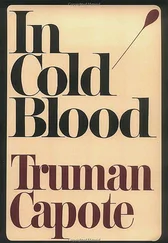The steps were repetitive, fairly easy to learn, and in a kind of conga line that jerked rhythmically to music provided by two groups of drummers and snake-charmer flute-tooters, we literally danced the day away. The relatives of the deceased, having sacrificed for years to finance this ritual, at the conclusion of which the remains were to be permanently reburied, weren’t about to waste a minute of it.
Afternoon was beginning to purple like the best English prose when the music abruptly stopped, dancers relaxed, and the entire tribe seemed to utter an extended sigh of accomplishment and release. Queen Beth now emerged from a dark corner of the longhouse, where she’d sequestered herself most of the day, afraid perhaps that she might be pressed to dance, chew betel nut (though only the elderly — and I — so indulged), or, worse, allow her royal spouse his conjugal rights. Members of our rafting party exchanged glances now, wondering if it wasn’t time to take our leave. It was then that our eyes were directed to a voluminous cauldron resting on live coals at the center of the longhouse, and in which there bubbled a stew more gray in color than that shade of gray that separates the eater from the eaten. It was din-din time in the cannibal village. Definitely time to go.
Now, in fairness, the Karo Batak seemed much too innocent, too tame to be practicing man-eaters, and despite periodic reports to the contrary (rumors spread by neighboring tribes), were said by the Indonesian government not to have lunched on their fellows in about four generations. Some were converted Christians (leading me to wonder if they didn’t especially enjoy Holy Communion), and the Karo Batak mind is so inexplicably disposed to the game of chess that within a year after being instructed in its intricacies, members were said to be playing on a par with European masters. Go figure. Nevertheless, one look at that ghoulish gray stew and we were moved to excuse ourselves. Beth and I changed out of our sarongs, surrendered our gold trappings (the headpieces alone could have financed a Las Vegas pawnshop), and as abdicating monarchs, shook every hand in the village before taking the long muddy trek back to our bus.
Now, at the very worst, that stew meat was dog. Or monkey. More than likely it was only chicken. Be that as it may, I shall never cease to insist that once upon a time, in the tiger-haunted hills of Sumatra, I wielded the savage scepter of the King of the Cannibals. And at those who might dispute that claim, I’m fully prepared to hurl the ancient and traditional curse of the Karo Batak: “I pick the flesh of your relatives from between my teeth.”
Two days before we hobnobbed with the Karo Batak, we’d visited an orangutan rehabilitation center. It’s true, but lest anyone think that in some Darwinian fluke the big red apes might be distantly related to Lindsay Lohan, let me assure you that what plagues orangutans isn’t drugs or booze. These primates were addicted to something far more dangerous: human beings. Imagine a Betty Ford Clinic where the demon to be exorcised was Betty Ford.
Baby orangutans were said to make wonderful pets. Beautiful in a sort of goofy way — resembling a cross between Homer Simpson, Lucille Ball, and the Gerber Baby — they look like a creature you might expect to speak Chiclets. Instead, they jabber primate nursery noises, and gurgling and cooing, become very attached to their human owners, upon whom they bestow bountiful hugs and kisses. They remain affectionate as they grow older, but by the time they’re half grown, they’ve become so strong they’re breaking ribs with their embraces and furniture with their playfulness. Among affluent Indonesians, it has long been a fad, a status symbol, to keep a young orangutan as a house pet — that is, until it reaches an age when, innocently enough, it becomes a house wrecker.
There’s a law in Sumatra against harboring an orangutan, but the Dutch, who controlled the island until 1949, devised a program whereby a wealthy violator could “donate” his rowdy juvenile ape to the government. The owner would thereby avoid punishment and save face (important in that society), the ape would go into rehab. At the forest compound east of the capital, Medan, pet apes would be weaned from human dependence, made wary, even fearful, of men; and gradually reconditioned so that theoretically they could function independently in the wild. A high platform had been erected in the jungle about a half mile from the compound proper, and very early each morning, bananas and milk would be set out atop it, on the presumption that the surrendered apes hadn’t yet learned to sufficiently fend for themselves. Visitors like us, who’d hiked into the feeding station, would start to hear branches snapping as one by one, young orangutans would come swinging through the trees to receive their government handout: a simian food bank, you might say.
As implied, the rehab compound was quite a ways in the boondocks. In order to make that sunup hike to the feeding platform, our rafting group had to spend the night at the compound. The Dutch had built two Western-style houses on the grounds, one of which was occupied by resident rangers, the other left empty for visitors; and by empty, I mean completely unfurnished. We were to lay out our sleeping bags on the bare floors of the two main rooms. There was, however, a tiny room in the rear, off the kitchen and near the edge of the jungle, that had a separate entrance — and a cot. Now, I’d hurt my back on the volleyball court shortly before leaving home, so I petitioned our Sobek guides to allow me, for my spine’s sake, to sleep in that room. To be honest, sore back or no sore back, the main reason I coveted those isolated accommodations was that I’m an almost pathologically light sleeper: should a moth land on my windowpane or somebody strike a paper match within forty yards of my bed, I snap instantly awake. You might as well set off fireworks next to my bed as snore in my vicinity, and I knew that Big Jim Pleyte, with whom I’d previously camped in Africa, was, for one, a world-class snorer.
When, however, our guides asked permission for me to sleep in the little room, it was denied. We were told that it was reserved for rangers. As bedtime arrived and the room showed no sign of occupancy, Beth petitioned again on my behalf. And when refused, she persisted. Beth wouldn’t give up. She just badgered. Finally, the ranger in charge reluctantly caved in. I unfolded my sleeping bag on the cot’s bare mattress and enjoyed a restful slumber there.
Okay, fast-forward a week. We’d set up camp on the banks of the Alas after a long day on the river, and were heating our evening repast over an open fire when two forest rangers passed by in a motorized canoe. Following a friendly exchange, during which we inquired about wildlife in the vicinity (I, for one, was hot to see a tiger), we invited the rangers to eat with us. After dinner, they inquired what we’d seen of Sumatra since our arrival in the country (our personal ranger, temporarily setting Louis L’Amour aside, was interpreting). When we related that prior to putting into the river we’d spent a day and night at the orangutan rehab center, they nodded approval. Then one of them asked, “Did you happen to see the haunted room there?”
The “haunted room”? Hello! Instantly, we knew the room to which they referred, and as the rangers elaborated, all eyes swung back and forth between them and me. That small room off the kitchen is left empty, they said, nobody will sleep there anymore. Why? Because on several occasions in the past, a beautiful naked woman with very long black hair has appeared in the narrow clearing at the rear of the house, called to the ranger who happened to be staying in that room, and beckoned him to follow her into the jungle. Those who did were never seen again.
Читать дальше












